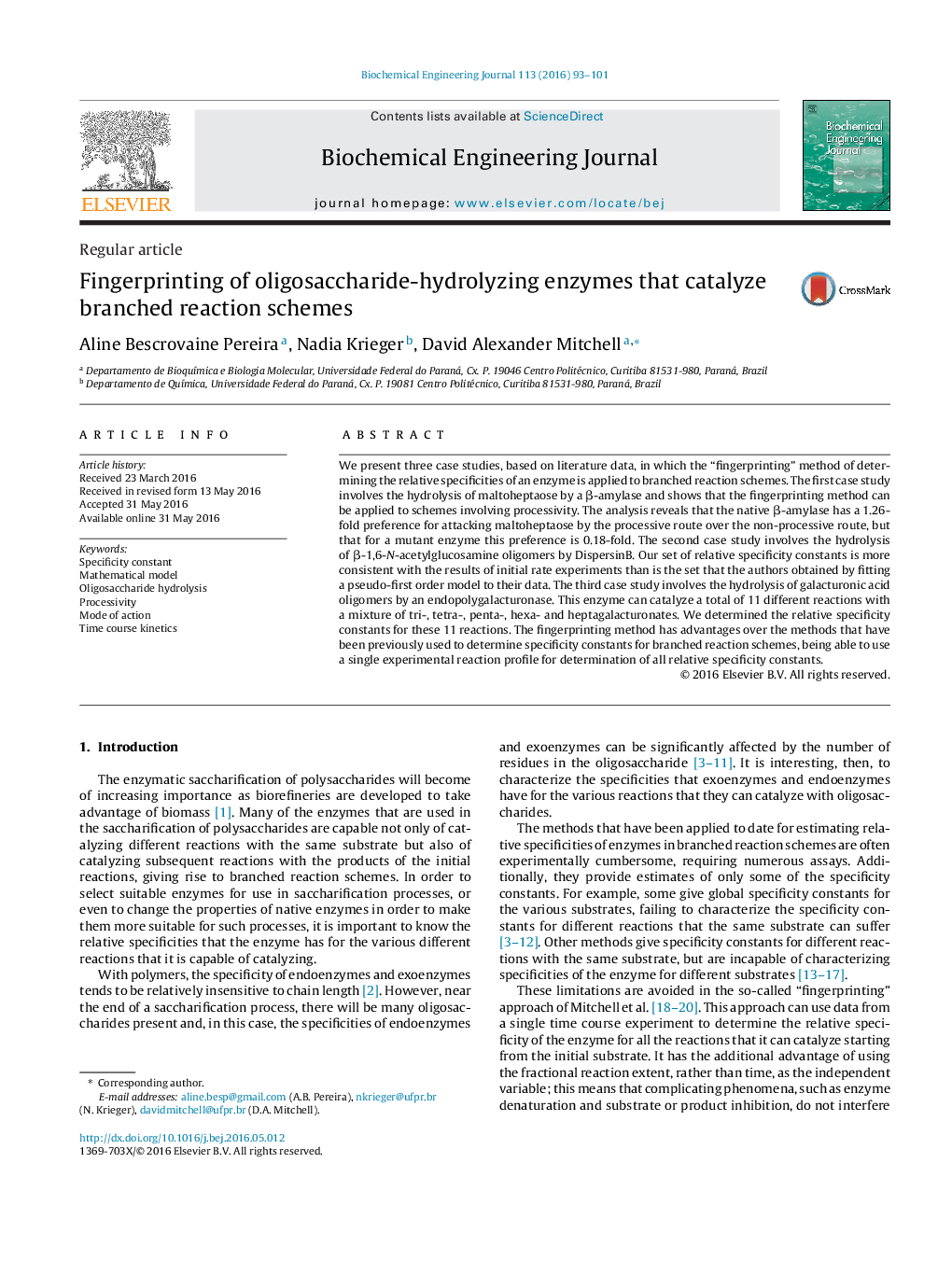| Article ID | Journal | Published Year | Pages | File Type |
|---|---|---|---|---|
| 2744 | Biochemical Engineering Journal | 2016 | 9 Pages |
•Relative specificity constants are determined for enzymes in 3 branched schemes.•Case 1 is for an enzyme choosing between processive and non-processive routes.•We conclude that fingerprinting can quantify the results of enzyme engineering.•Cases 2 and 3 are for branched schemes involving up to 11 reactions with 7 species.•We show how to extract all relative specificity constants from time course experiments.
We present three case studies, based on literature data, in which the “fingerprinting” method of determining the relative specificities of an enzyme is applied to branched reaction schemes. The first case study involves the hydrolysis of maltoheptaose by a β-amylase and shows that the fingerprinting method can be applied to schemes involving processivity. The analysis reveals that the native β-amylase has a 1.26-fold preference for attacking maltoheptaose by the processive route over the non-processive route, but that for a mutant enzyme this preference is 0.18-fold. The second case study involves the hydrolysis of β-1,6-N-acetylglucosamine oligomers by DispersinB. Our set of relative specificity constants is more consistent with the results of initial rate experiments than is the set that the authors obtained by fitting a pseudo-first order model to their data. The third case study involves the hydrolysis of galacturonic acid oligomers by an endopolygalacturonase. This enzyme can catalyze a total of 11 different reactions with a mixture of tri-, tetra-, penta-, hexa- and heptagalacturonates. We determined the relative specificity constants for these 11 reactions. The fingerprinting method has advantages over the methods that have been previously used to determine specificity constants for branched reaction schemes, being able to use a single experimental reaction profile for determination of all relative specificity constants.
Graphical abstractFigure optionsDownload full-size imageDownload as PowerPoint slide
